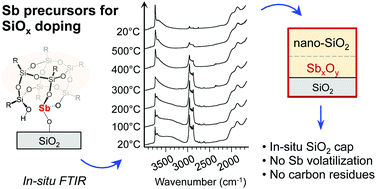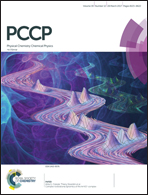Ethoxy and silsesquioxane derivatives of antimony as dopant precursors: unravelling the structure and thermal stability of surface species on SiO2†
Abstract
We report here the controlled preparation of SiO2 supported Sb-(mono)layers and their thorough characterization by in situ IR, solid-state NMR and elemental analyses. This study allows for the molecular understanding of the surface Sb species derived from the grafting of ethoxy and polyhedral oligomeric silsesquioxane antimony derivatives as mono- or bi-podal Sb(III) surface species depending on the number of surface SiOH groups. This result is different from what was observed with the phosphorus analogue (POSS-P) that yielded P(V) species. A monolayer coverage of Sb species onto silica was also obtained using both POSS-Sb and the [Sb(OEt)3]2 derivative with surface densities ranging from ∼0.3 Sb nm−2 to 1.8 Sb nm−2, respectively. It is noteworthy that under optimized conditions, a layer of antimony species or suboxides on silica was produced using POSS-Sb without significant Sb loss, highlighting the protective properties of the POSS cage. These results open new perspectives for the controlled and non-destructive Sb-doping (Molecular Layer Doping) of semiconductors dedicated to nano-device applications.



 Please wait while we load your content...
Please wait while we load your content...